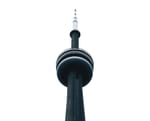The 2020 Maple Leafs Top 25 Under 25 is our tenth list, but not quite our tenth anniversary yet. We began this exercise in 2012, and two lists were produced that year, one in January and then again in the summer. Since then, the voting and the sharing of the list has been a late summer tradition at PPP, until this year, when a few things are different.
We’ve got a pared-down list of prospects and current core NHLers to choose from, and that makes it easier and also harder to rank 25 players. There’s no easy fills for someone like Alexander Kerfoot who came in ranked fifth last year and aged out all in the space of two months.
Looking back at past lists, you can see the team trying to be good in the first few years, with a good core at the top. The depth just wasn’t there, and time now shows us that those lower ranked players back in the day were not just waiting to develop. They actually weren’t very good. The tank year is the most interesting year to look at, and the four lists since then show a rapid change to NHL-quality players (or nearly) well down the list.
First up is the full nine lists with the players coded by how many games they’ve played to date in the NHL web link:
I picked arbitrary cutoffs years ago for this summary to more-or-less conform to the numbers commonly used to rate draft picks. It takes a long time to go from blue to yellow, and as you can see Mitch Marner didn’t make it this year. He is stuck right on 300 regular season games played.
Connor Brown turned yellow this year, and barring any major injuries, he’s clearly going to get to red someday. He has to be the biggest bad guess we’ve made. Worse than any of the players ranked in the top 10 who didn’t make it. Josh Leivo is likely close behind Brown for a wrong guess, and Zach Hyman is going to stand out as an underrated prospect as well.
To see how wrong we were in the other direction, I like the “where are they now” chart web link:
This didn’t change a whole lot from last summer, but it likely will this year when the actual NHL offseason hits. With a choice between waiting for an AHL season that may not start until next year and a European one that will more likely start this fall, many players who already know they aren’t going to crack the NHL may make the move.
This chart always gets more yellow, the older the list, so the older the player. Age 25-26 is usually when a player hits the ceiling in North America and leaves for better pay than the AHL provides. We’re just starting to see real information on KHL salaries for the first time as they implement their salary cap this season. A good, but not star, KHL import makes less than what a player on a minimum-salary, one-way NHL deal gets in the AHL, and more than even a generous minors salary on a two-way deal. By the time you factor in quality of life, ice time, usage etc., the KHL can seem like a big step up even if the pay isn’t much different.
By the amount of pale yellow on those older lists — KHL, SHL, Liiga or NLA — you can see that our wrong choices were not far off. Peter Holland, Matt Frattin, Cody Franson, Jesse Blacker and Carter Ashton are all very good to excellent KHL players. Teemu Hartikainen is a star, and maybe he should be up there with Brown as a misranked player.
Tyler Biggs is the only player on the entire list who has — to date — topped out at ECHL level. He’s a very good ECHLer, but that is his peak.
It’s a testimony to the trading away of draft picks a team does, that there’s only two junior players on the list, and both might be pros soon. There’s a group of players who are splitting time between the AHL and NHL, and I’ve picked wherever they finished this year for the most part, but those are the names you should expect to see go yellow someday, maybe soon.
Starting in 2018, and moving into 2019, the top 10-15 playeers on the lists are mostly NHLers now. In the past, that took a lot longer to happen. Of the really quality roster of players from the tank year, 2015, most of those NHLers barely played NHL hockey that year. But the top 15 of 2018’s list and the top 10 of 2019’s are all players with NHL experience, many of them future 500+ game players. Speaking of, Morgan Rielly is the only player who went red this year, but it’s feasible all of the top 10 last year eventually will get there.
2019 might end up the best list ever, when we look back in years to come, as players start to age off and new prospects come in ones and twos instead of bunches, but that’s getting ahead of ourselves, now it’s time to focus on this year’s crop of under 25 Leafs and Leafs prospects and see what we’ve got, and do our best to guess correctly.




Comment Markdown
Inline Styles
Bold: **Text**
Italics: *Text*
Both: ***Text***
Strikethrough: ~~Text~~
Code: `Text` used as sarcasm font at PPP
Spoiler: !!Text!!